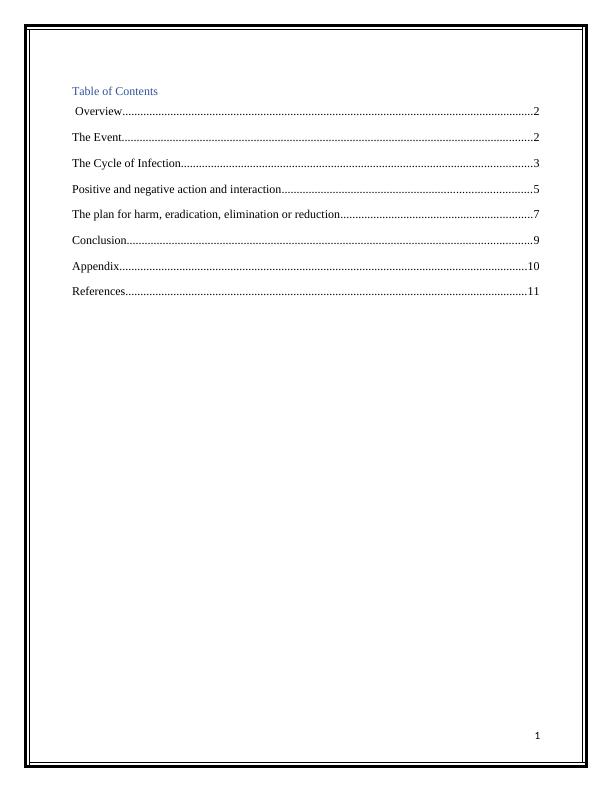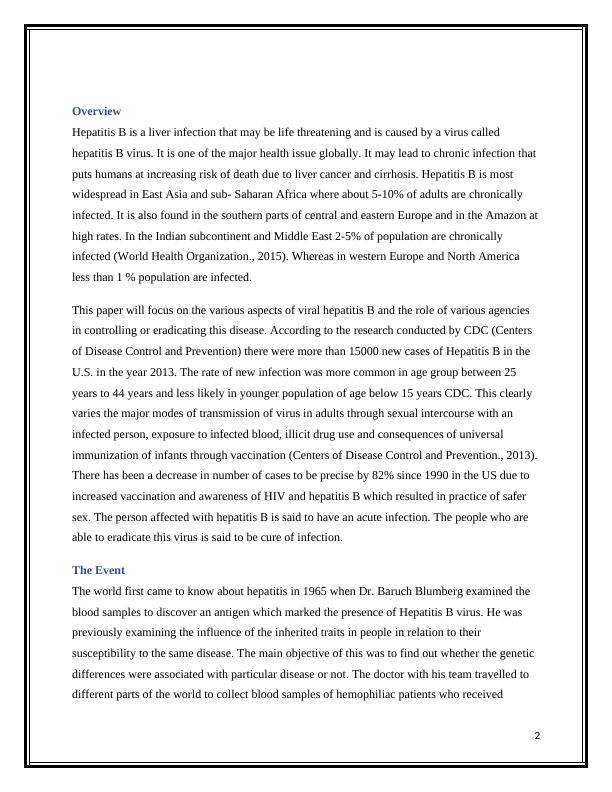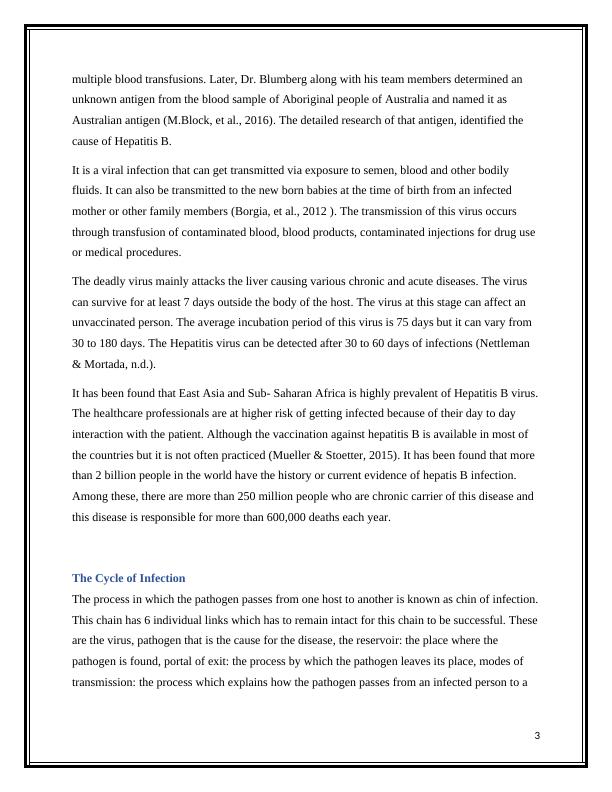Viral Hepatitis B: Understanding the Disease and the Role of Agencies in Controlling It
This assignment is about Clostridium Difficile Infection in the context of Infection Prevention and Control in the Nursing Studies BSc (Hons) Top-Up degree at University of Derby Online (UDOL). The assignment is due on April 9th 2017.
14 Pages4322 Words449 Views
Added on 2023-06-11
About This Document
This paper focuses on the various aspects of viral hepatitis B and the role of various agencies in controlling or eradicating this disease. It also includes the plan for harm reduction, elimination or eradication of the disease.
Viral Hepatitis B: Understanding the Disease and the Role of Agencies in Controlling It
This assignment is about Clostridium Difficile Infection in the context of Infection Prevention and Control in the Nursing Studies BSc (Hons) Top-Up degree at University of Derby Online (UDOL). The assignment is due on April 9th 2017.
Added on 2023-06-11
ShareRelated Documents
End of preview
Want to access all the pages? Upload your documents or become a member.
Population Health Advocacy
|8
|2274
|15
Epidemiology of Communicable Disease | Study
|11
|3193
|74
Similarities and Differences between Hepatitis B and Hepatitis C
|4
|500
|169
Hepatitis B Virus - Definition, Taxonomic Classification, Signs and Symptoms, Diagnosis and Testing, Treatment and Lab Test, Epidemiology
|10
|962
|89
HIV and Hepatitis B and Hepatitis C Infections
|5
|960
|248
Hepatitis B. Who are the high risk groups for hepatitis
|3
|491
|205




